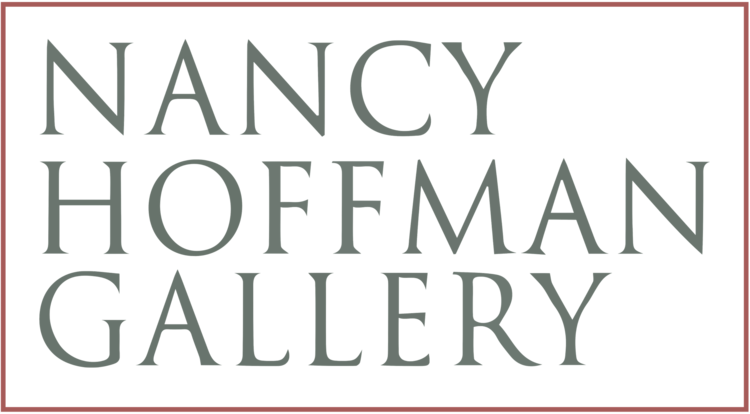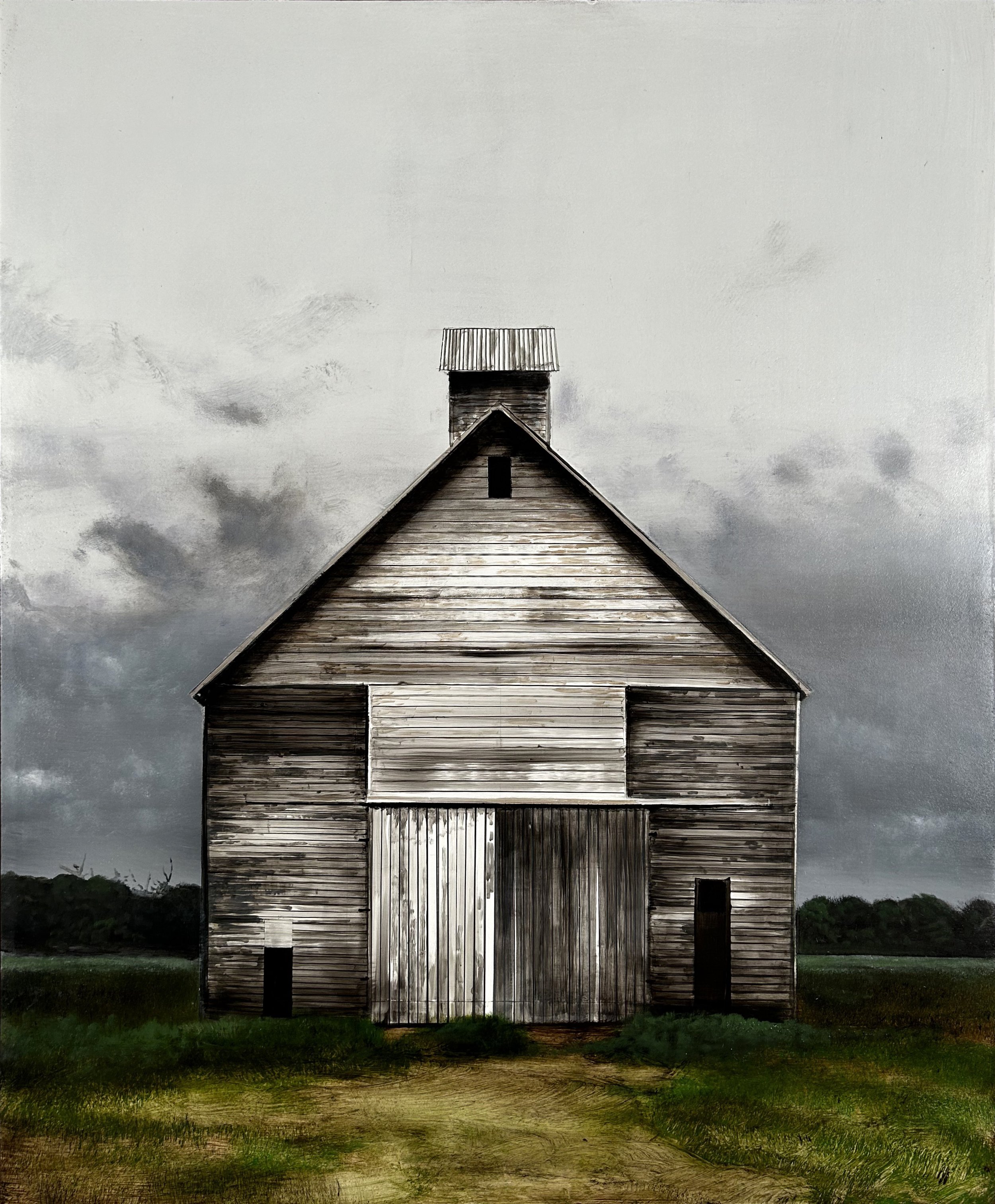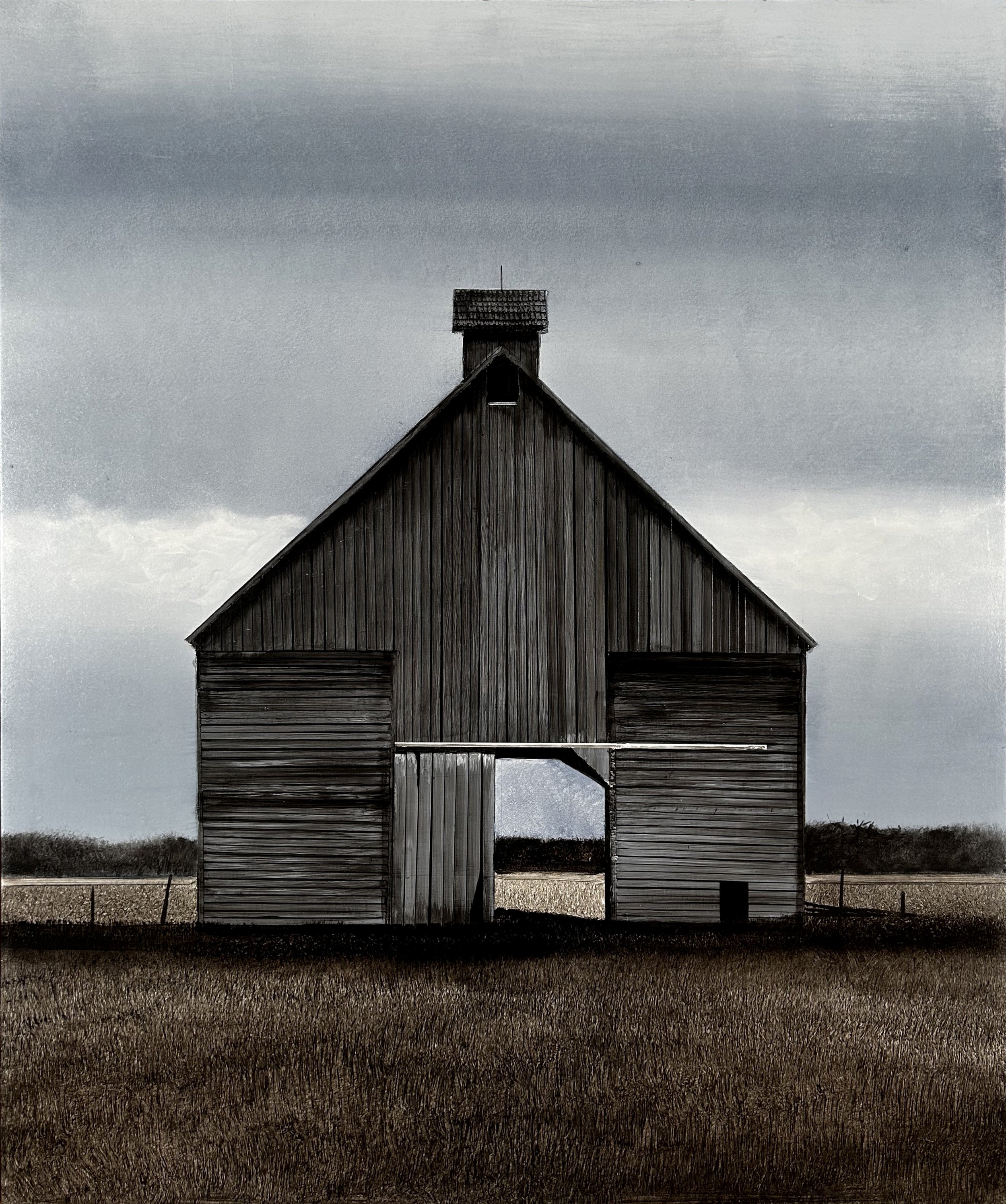Michael Gregory
Tempus Fugit
November 2 - November 6, 2022
An American Spirit, an American Icon--paintings by Michael Gregory
Since 2000 Gregory has focused on the American iconic landscape. A sense of loneliness pervades his paintings, which may include a barn or farm community, a silo, telephone poles, fences, fields of hay, cloud or star-filled skies. His point of departure is love of the land, particularly the West that John Steinbeck described in his books. The artist does not seek a photoreal representation of the land and sky; each painting in oil on canvas is a reimagined vision of what he has seen as he drives through vast stretches of the land and skyscape. Silence permeates each canvas. From pink sunset skies to plowed hay fields to snow-covered barns, quiet prevails.
In the new work the artist has incorporated his experience of living on the East Coast in the Hudson River Valley, after spending most of his life in California. Gregory takes advantage of the four seasons, embracing the different topography and light; exploring the palette of snow-filled fields. Barns of rainbow hues appear inspired by the Pennsylvania Dutch tradition of using pink, blue, green, yellow to bedeck structures in that part of the world. Most of the paintings embrace color in a poetic, subtle and rich fashion
While the apparent subject of the work is “the landscape,” these are not simply the landscape qua landscape. This is a terrain where space seems infinite, where light can shine in the sky uninterrupted by the detritus of civilization. These are paintings harking back to another time, yet achingly contemporary. Pared down to the essence of structure, a barn sets the stage for mood, time and place, arresting the eye as one views the fields and trees and skies. The poetry in the paintings is palpable; the sense of memory is undeniable. As important as the land, the structures, are Gregory’s skies, sometimes ominous, at others a peaceful blue, or golden light-filled, bathing all that is earthly in its glow.
These are American paintings filled with Lewis and Clark’s commitment to the future, and to the preservation of a landscape unique in the world.
Gregory writes:
“America has always been an idea, a construct of our imagination. Our pastoral yearnings have outdistanced even its vast boundaries and empty places, often far from the reality of unforgiving landscape and hard life on the land. This country is littered with buildings that are reminders of this struggle.
Our American West, its middle, and our Great Plains have provided us a rich metaphor for discussion of our hopes, aspirations and failures. They are the subject of literature, poetry and song, making up our American common language. For a number of years, I have taken road trips throughout the West, Mid-West and Hudson Valley. These paintings are visual composites of these trips, re-imagined and re-constructed in the studio.
The barns and buildings reflect the people who built them; indeed they are reminders of them. Some are set solitary against a backdrop of sky. Others are swallowed in a sea of grain.
In the studio, images are assembled on the canvas much like one would compose a still life. I am drawn by the stark geometry of the buildings, but they are also chosen for their emotional and symbolic resonance. These rural structures are reminders of the vast landscape of our human frailty in the face of time and the elements. They are memento mori.
These paintings by their conception and resolution are fictive places but places we are from and to which we hope to return. I would like to evoke in the viewer an experience of America’s vast reservoir of space, distance, solitude, loneliness and yes, beauty.”
The artist’s work has been shown at The Arkansas Arts Center, Little Rock; Arvada Center for the Arts and Humanities, Denver; Boise Art Museum, Idaho; Boulder Center for the Visual Arts, Colorado; The Butler Institute of American Art, Youngstown, Ohio; California College of Arts and Crafts, Oakland; Center for the Arts, Vero Beach, Florida; Evansville Museum of Arts, History and Science, Indiana; Fine Arts Center Galleries, University of Rhode Island, Kingston; The Fine Arts Museums of San Francisco, California; Flint Institute of Arts, Michigan; Florida International University, Miami; Fort Collins Museum of Contemporary Art, Colorado; Hunter Museum of Art, Chattanooga, Tennessee; Maier Museum of Art, Randolph-Macon Woman’s College, Lynchburg, Virginia; Richmond Art Center, California; San Francisco Arts Commission Gallery, California; San Jose Institute of Contemporary Art, California; San Mateo Arts Council, California; Selby Gallery, Ringling School of Art and Design, Sarasota, Florida; The Charlotte and Philip Hanes Art Gallery, Wake Forest University, Winston-Salem, North Carolina.
His work is included in the collections of the Boise Art Museum, Idaho; Delaware Art Museum, Wilmington; Denver Art Museum, Colorado; Evansville Museum of Arts, History and Science, Indiana; San Jose Museum of Art, California, and numerous private collections.
















